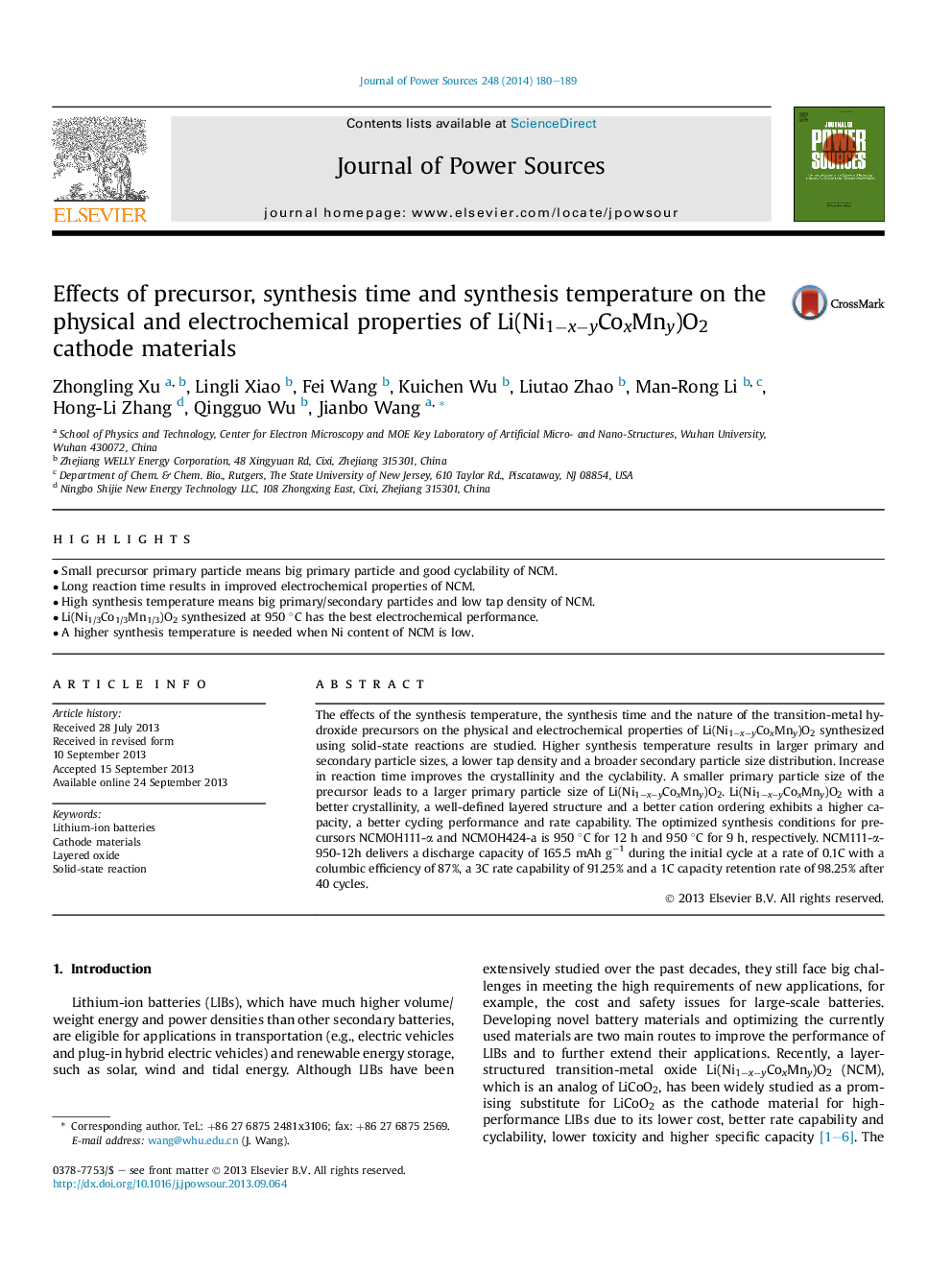| Article ID | Journal | Published Year | Pages | File Type |
|---|---|---|---|---|
| 7738782 | Journal of Power Sources | 2014 | 10 Pages |
Abstract
The effects of the synthesis temperature, the synthesis time and the nature of the transition-metal hydroxide precursors on the physical and electrochemical properties of Li(Ni1âxâyCoxMny)O2 synthesized using solid-state reactions are studied. Higher synthesis temperature results in larger primary and secondary particle sizes, a lower tap density and a broader secondary particle size distribution. Increase in reaction time improves the crystallinity and the cyclability. A smaller primary particle size of the precursor leads to a larger primary particle size of Li(Ni1âxâyCoxMny)O2. Li(Ni1âxâyCoxMny)O2 with a better crystallinity, a well-defined layered structure and a better cation ordering exhibits a higher capacity, a better cycling performance and rate capability. The optimized synthesis conditions for precursors NCMOH111-α and NCMOH424-a is 950 °C for 12 h and 950 °C for 9 h, respectively. NCM111-α-950-12h delivers a discharge capacity of 165.5 mAh gâ1 during the initial cycle at a rate of 0.1C with a columbic efficiency of 87%, a 3C rate capability of 91.25% and a 1C capacity retention rate of 98.25% after 40 cycles.
Related Topics
Physical Sciences and Engineering
Chemistry
Electrochemistry
Authors
Zhongling Xu, Lingli Xiao, Fei Wang, Kuichen Wu, Liutao Zhao, Man-Rong Li, Hong-Li Zhang, Qingguo Wu, Jianbo Wang,
